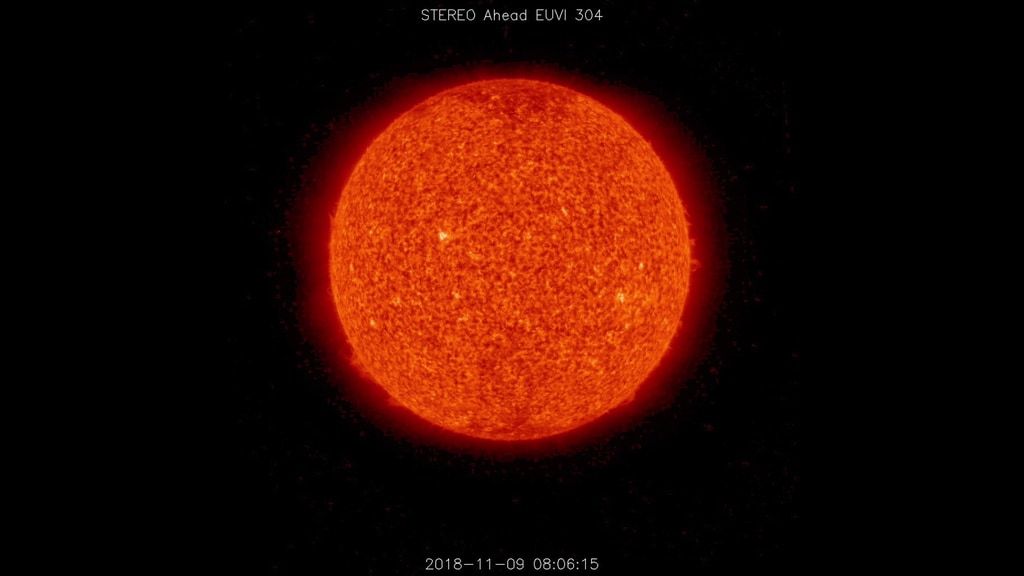
Coronal mass ejections aren't known for being subtle: Each such event can fling huge amounts of the soup of charged particles called plasma off the sun and out into the solar system.
In November 2018, as seen from Earth and certain spacecraft, the sun seemed to be calm. But it wasn't: The sun was experiencing what scientists call a "stealth" coronal mass ejection. And conveniently, NASA's Parker Solar Probe was completing its first close pass behind the sun, putting its instruments in a perfect position to see what was happening on Nov. 11 and 12 during this usually cryptic event.
"If you've ever seen a coronal mass ejection image, you normally see a lot of activity in these images," Kelly Korreck, a solar physicist at the Smithsonian Astrophysical Observatory, said during a presentation last month at the 235th meeting of the American Astronomical Society in Honolulu. "You would see a large blowout, you would probably see one of these exploding. But as you saw in this video, there wasn't much there."
Related: See the sun flip out in wild new satellite view
Even in some of the Parker Solar Probe data, it wasn't obvious at first what was happening during the incident, Korreck said. "When we looked at this initially, just the thermal data, we didn't necessarily think that there was a coronal mass ejection there," she said.
But other observations targeting energetic particles did include the fingerprint of a shock, a phenomenon that usually accompanies a coronal mass ejection. Scientists could also confirm the probe was flying through a coronal mass ejection based on data its instruments were gathering about the magnetic field.
The Parker Solar Probe is flying closer to the sun than any spacecraft ever has, which means it can study coronal mass ejections earlier in their development than other probes can. That means scientists hope the probe's data could help better pinpoint where on the sun an individual coronal mass ejection is born.
But just seeing a stealth coronal mass ejection is a step in the right direction, according to Korreck. "They're something that we're not traditionally able to see in the ways that we've previously detected coronal mass ejections," she said. "We're starting to see hints of them with better and better telescope resolution. However, at the same time, we've kind of reached the end where we actually have to go in situ to do a better measurement." And there's nothing more in situ than Parker Solar Probe.
Within our solar system, coronal mass ejections are important because they can interfere with communications and navigation satellites orbiting Earth. And the farther astronauts venture from Earth, the more vulnerable they will be to the potential health impacts of such blasts. That's when learning to see coronal mass ejections we currently miss would become particularly important.
Such phenomena are also intriguing because our sun is a star like any other. Scientists have spotted coronal mass ejections produced by other stars, but they'll never be able to see all such distant events.
"This is another class that definitely can't be seen on other stars," Korreck said. "Is there a way that we can do this with Parker [Solar Probe] to better understand what's going on in other star systems?"
Email Meghan Bartels at mbartels@space.com or follow her @meghanbartels. Follow us on Twitter @Spacedotcom and on Facebook.
Bagikan Berita Ini














0 Response to "NASA's Parker Solar Probe spotted 'stealth' outburst on the sun - Space.com"
Post a Comment